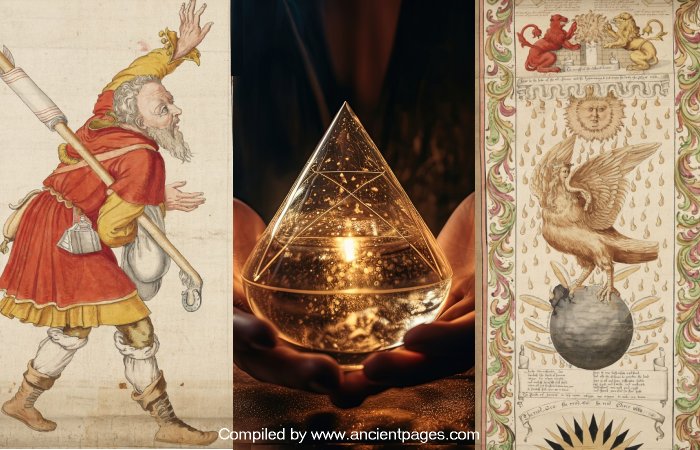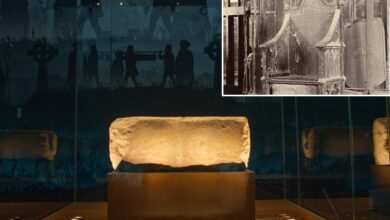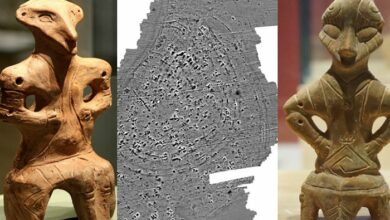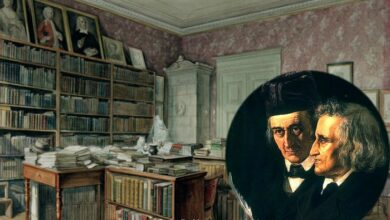Mysterious Undeciphered Ripley Scroll And Its Connection To The Philosopher’s Stone

Jan Bartek – AncientPages.com – One of the most unusual and intriguing alchemy manuscripts is the Ripley Scroll.
The Ripley Scroll, an impressive manuscript that is almost 6 meters in length, provides instructions on the creation of the legendary Philosopher’s Stone.
Alchemy And The Philosopher’s Stone
Alchemy is typically perceived as an ancient practice that aims to transform common metals into gold by using a mysterious element known as the Philosopher’s Stone.
The Philosopher’s Stone is a mythic alchemical substance. Credit: Adobe Stock – Anastasia
The so-called “philosopher’s stone,” a legendary substance believed to have the power to transform common metals into gold and silver, was the holy grail of alchemy from the Middle Ages up until the late 17th century. It was also considered an elixir of life, with incredible healing properties and even the ability to bestow immortality on its owner. Interestingly, despite its name, it may not have been a stone at all but could have been a powder or some other form. It went by various names, including “the tincture,” “the powder,” or “materia prima.”
Mystics held the belief that only pure Goodness can bring about human transformation. Christian theology interprets this as the influence of Christ’s Spirit. The Philosopher’s Stone symbolizes Christ Jesus in this context, which explains its seemingly unbelievable powers.
Throughout history, many brilliant intellectuals from the Western world have embarked on a journey to discover the philosopher’s stone. It is generally believed that this mysterious stone can be created through an alchemical procedure known as The Magnum Opus or The Great Work.
The Ripley Scroll Remains Undeciphered
Around 23 versions of the Ripley Scroll are known to exist. While they differ in size, color, and detail, all of them are based on a lost original from the 15th century.
It is wise to admit that plenty of scientists do not know about the enigmatic Ripley Scroll.
George Ripley depicted on the scroll. Credit: Wikipedia – CC BY 4.0
The manuscript derives its name from George Ripley, a medieval canon originating from Bridlington Priory, Yorkshire. This scroll is abundant with cryptic and interesting symbols. However, these alchemical symbols remain somewhat unclear and open to interpretation.
Scholars have tried to understand What motivated the production of the Scrolls in the first place? Whence did the texts originate and how were they selected, combined and illustrated? To what extent did the Ripley Scrolls gain authority and notoriety through association with Ripley?” 1
George Ripley Was One of England’s Most Famous Alchemists
Sir George Ripley (c. 1415–1490) was a renowned alchemist whose writings influenced alchemists like John Dee, Robert Boyle, and Isaac Newton.
Did Ripley create the scroll himself? It is an open question historians cannot answer. The scrolls are referred to as Ripley scrolls due to the inclusion of poetry attributed to the renowned alchemist. The illustrations within these scrolls symbolically represent the elusive Philosopher’s Stone.
One of several images on the Ripley Scroll. Credit: Wikipedia – CC BY 4.0
According to scholars, “these ‘Ripley Scrolls’ are now prized possessions and rarities in modern collections of alchemica thanks to their unusual format and beautiful illuminations. Their association with Georger Riply, fifteenth-century writer whose name features in the later history of some parts of the corpus around the “Verse”, further accounts for their current popularity. Upon closer inspection, however, the Ripley Scrolls are a confused and confusing set of historical objects.
The origin of these Scrolls may be more recent than Ripley’s lifetime and their association with Ripley is not present in early examplars. Further, they were not intented to be used in separation from other alchemica; the text on the Scrolls (poems from the corspus around the ‘Verses upon the Elixir’) were also circulated in plain manuscript volumes.” 1
What Does The Ripley Scroll Depict?
The Ripley Scroll is full of images and symbols that are difficult to understand.
Upon first glance at the scroll, we are immediately drawn to a prominent figure with a large beard, tightly holding an egg-shaped vase. This character, adorned in a cap or headdress and robe, is most likely representing Hermes Trismegistus. Known as the ‘thrice-greatest’, Hermes Trismegistus is a legendary figure credited with founding alchemy. He is often associated with Thoth, the Egyptian deity of healing.
The toad and the dragon. Credit: Yale University Beinecke Rare Book and Manuscript Library
Certain symbols, such as hermetic vases, a toad, the dragon, the Bird of Hermes, and the red and green lions, are commonly recognized in alchemy. However, their representation can vary significantly depending on their specific application or context.
The Purpose Of The Ripley Scroll Remains A Mystery
According to Professor R.I. McCallum the application of these scrolls remains largely unknown, with no contemporary descriptions by even John Dee. It has been proposed that the scrolls may have served as a form of advertisement in alchemists’ shops, but this theory lacks supporting evidence and seems highly improbable for several reasons.
The length of the scrolls would make them challenging to display, and their current state suggests they were not subjected to extensive wear and tear that would be expected from such usage.
Some scrolls seem designed for hanging, which would necessitate ample space due to their considerable length. Alternatively, a long table might be required if one wishes to view the entire sequence at once. Compared to a folio edition book that could be conveniently placed on a lectern, these scrolls must have been quite cumbersome.
The purpose of the mysterious Ripley Scroll remains an enigma. The manuscript’s unique imagery and symbols add to its perplexity. Perhaps only individuals with profound alchemical understanding may eventually unravel the secrets of the Ripley Scroll.
Written by Jan Bartek – AncientPages.com Staff Writer
Copyright © AncientPages.com All rights reserved. This material may not be published, broadcast, rewritten or redistributed in whole or part without the express written permission of AncientPages.com
Expand for references
- Timmermann, Anke. “The Ripley Scrolls: Alchemical Poetry, Images And Authority.” In Verse and Transmutation: A Corpus of Middle English Alchemical Poetry (Critical Editions and Studies), 113–42. Brill, 2013.
- Stanley Redgrove – Alchemy: Ancient and Modern
- Aaron Kitch. “The ‘Ingendred’ Stone: The Ripley Scrolls and the Generative Science of Alchemy.” Huntington Library Quarterly 78, no. 1 (2015): 87–125.
- McCallum R I. The Ripley Scroll of the Royal College of Physicians of Edinburgh. 1996. Vesalius 2:. 39-49.








